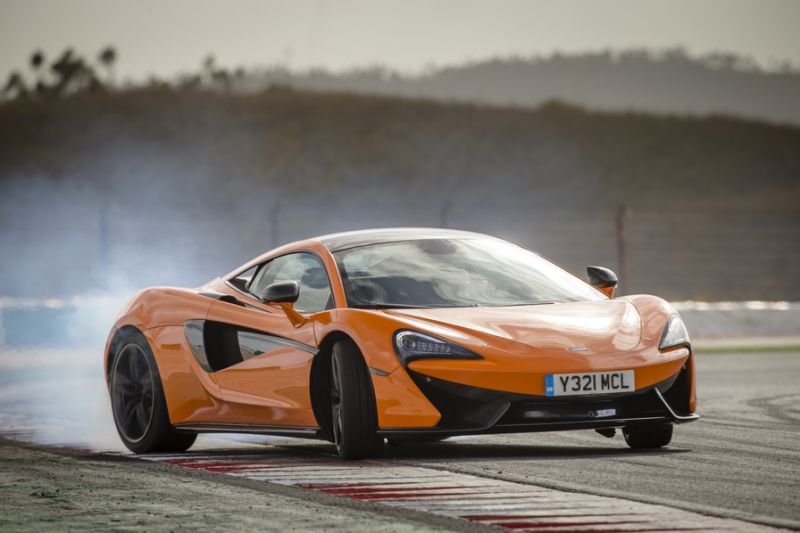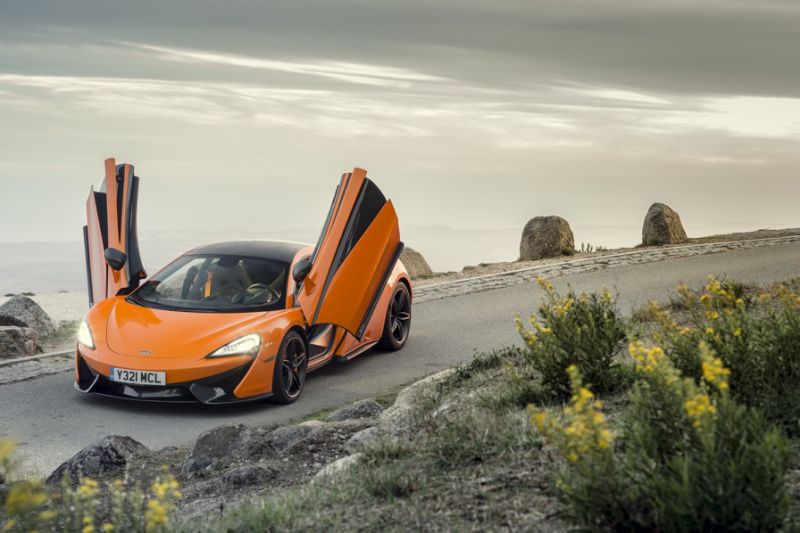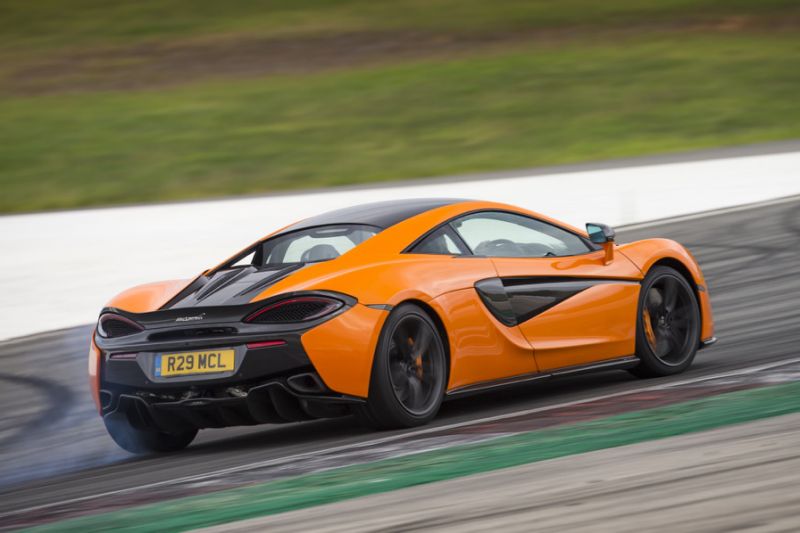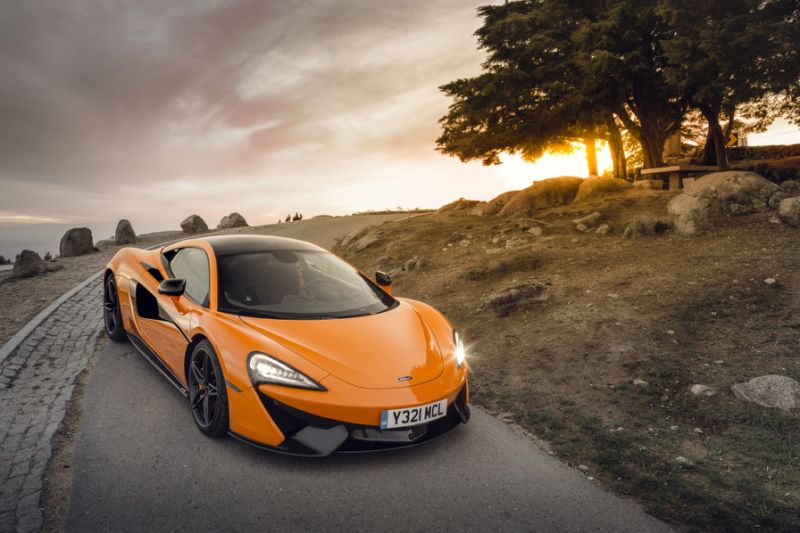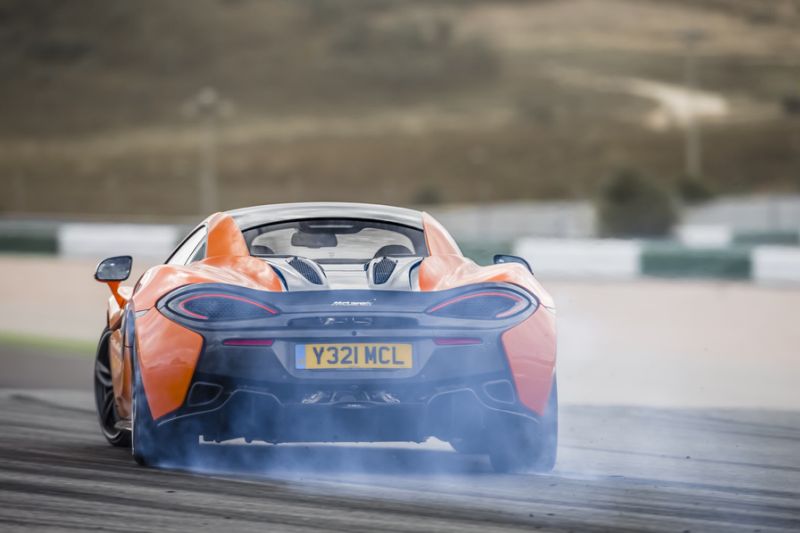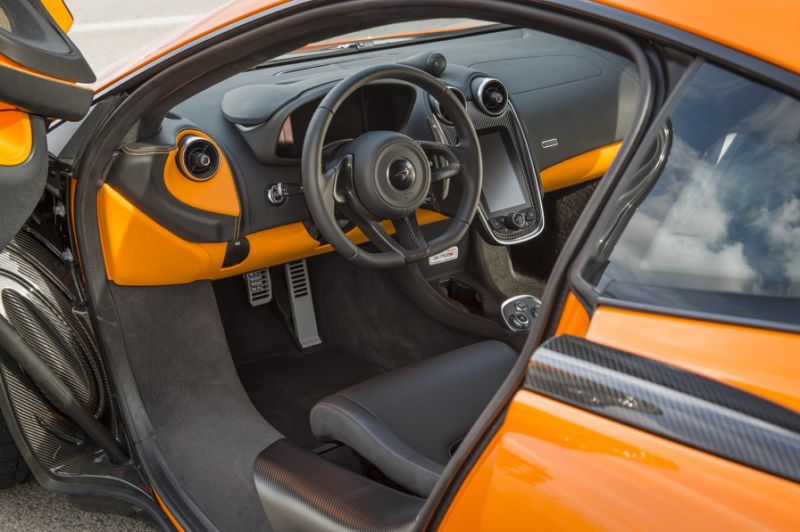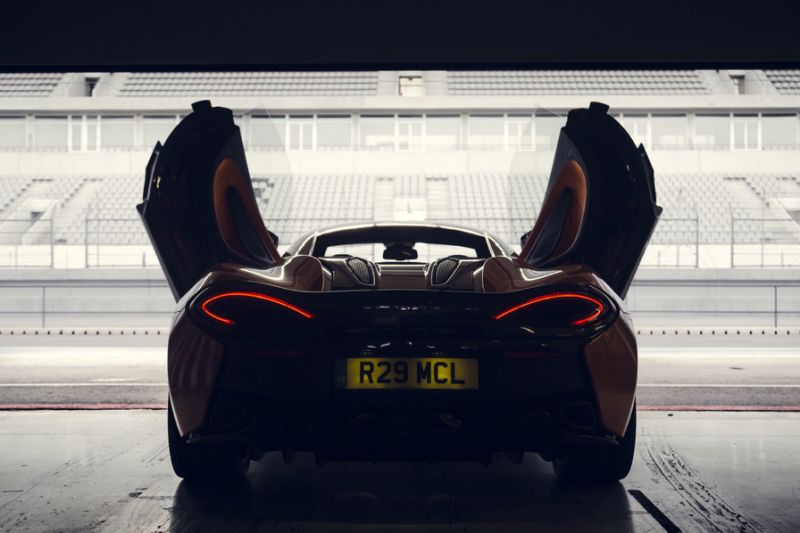It looks and drives like a supercar, but McLaren assures us it isn’t. The 570S is, in fact, a sports car, the cheapest McLaren on the lot—one that may cause Ferrari to rethink its strategy.
What Is It? McLaren 570S Coupe: rear-wheel-drive, two-seat sports car
Starting Price: $184,900
Competitors: Porsche 911 Turbo S, Audi R8, Mercedes-AMG GT S
Alternatives: Chevrolet Corvette Z06
Would I Buy It With My Own Money? For roughly the price of Porsche 911 Turbo, the 570S’ supercar demeanor makes it an instant winner.
We’re not typically in the habit of recommending carmakers’ least expensive offerings. But with its new 570S, McLaren makes any other course impossible. Simply put, the latest model from the vaunted English racecar constructor’s growing catalog of high-performance road cars is not only its most affordable offering ever, it is also the most satisfying—the svelte repository of more easily accessible fun.
So much so that we can say with assurance that if our supertanker came in tomorrow, even half-loaded—because the 570S’s starting price of $184,900 is no more (and possibly even less) than that of a well-optioned Porsche 911 Turbo—we’d be talking to our McLaren dealer about it. And, as our English friends might say, sharpish.
It’s hard for even the most dimly aware car fan not to admire McLaren. Founded in the UK in the 1960s by New Zealand’s legendary ex-patriot race driver and constructor, the late Bruce McLaren, and latterly run by the maniacally single-minded English engineer/businessman Ron Dennis, the long-running operation has won eight Formula One constructors titles and dominated many other forms of racing throughout the years. Just as remarkably, the firm all but reinvented the supercar game late in the last century (1992-1999) with its first road car, the stunning, jewel-like, cost-no-object F1. More than a million bucks to buy even then, today it’s a rare, multi-million dollar collectible that’s appreciating in value with the velocity of, well, a Le Mans spec McLaren F1 GTR.
After a lengthy hiatus, interrupted only by a disappointing joint venture with Mercedes–AMG to build the SLR, McLaren returned to the high-end road car fray for real and on its own in 2011, with the less expensive than F1 but still costly ($230,000 and up) MP4-12C. Assembled in a purpose-built facility adjacent to McLaren’s ultra-modern HQ in Woking, Surrey, that car was impressive, with supercar looks, blinding speed and immense grip, just as a buyer looking for a Ferrari 458 or other mid-engine supercar alternative might hope. While generally admired by the critics, however, the MP4-12C fell short of sales expectations, quickly sending McLaren engineers back to their cad-cam drawing boards.
Fortunately, the basic conception was sound. So in revised and lightly restyled form, that first new-era car re-emerged in 2014 as the 650S, available as a coupe for $267,900 or a convertible spider model for a not inconsiderable $28,000 more, or, should you prefer even more power, as the still pricier ($375,000) track-oriented 675LT.
Like today’s 570S and the legendary F1, or for that matter everything McLaren has built since 1981, all of these mid-engine, rear-wheel-drive road burners revolve around their carbon fiber tubs. Lightweight (165 lbs.), these central structures, known as mono-cells in McLaren-speak, offer unparalleled strength and protection, with rigidity claimed 25 percent greater than an equivalent aluminum structure. Indeed, engineers who joined visiting journalists at the 570S launch program in Faro, Portugal, reported that they’ve been able to re-use tubs (with new bodywork of course) a dozen times and more in government-mandated crash tests; metal cars head to the crusher after a single introduction to a fixed barrier.
The 650 and 675 helped right the company’s ship—2015 sales will reach 1,800, McLaren say, closer to its initial target. But that’s a ways yet from the still-exclusive 4000 per annum the company feels it is ideally suited to build. So enter the more affordable 570S, a new projected volume model, and a still cheaper, less powerful 540C, which will be sold elsewhere, including Canada, but not in the United States. Honing its marketing story and long-range strategic vision, McLaren explain today that the 570S and 540C comprise the first of three defining tiers for its model line, the so-called Sports Series. Because, they say, these 570s are sports cars, meant to be driven hard, yet used as daily drivers.
Perhaps they’ve forgotten saying more or less the same thing in 2011 when some of us were here at Portimao for the MP4-12C launch. But on the road it quickly becomes apparent that the 570S really is different than what’s come before. It feels more like an ordinary supercar, if that makes sense—a fast road machine in which one feels more quickly at home than in its predecessors. But if the Sports Series are sports cars, intended to constitute 60-70 percent of McLaren’s total sales, what are the others that came before?
More rarefied, say the company. Above 570S, in the middle of McLaren’s three-line hierarchy, lives the Super Series (comprising 650S and 675LT) with a track-focused mission. And atop the heap sits the Ultimate Series, wherein resides the 903-horsepower, gasoline/electric hybrid P1with its $1.4 million price tag. Being the fastest and most expensive by far, it caters to the obsessive, lunatic and braggart corners of the market. Production of the P1 was capped at a mere 375 examples, all of which have been sold.
So how do you make a McLaren for the masses? The 570S’ family resemblance is certainly strong. And many of the more expensive cars’ signature features are there. Carbon fiber tub—check. Dihedral doors—check. Twin-turbo, 3.8-liter V-8—check. Carbon-fiber discs—checkity-check-check. The blown V-8 is detuned for use in the 570 and more in the 540, but with just 2,875 lbs. to push around (300 lbs. less than an Audi R8, we’re told) it remains brutally fast.
So what changes? Where the upper tier models are a riot of carbon fiber, many body panels on the 570S are made of cheaper, heat-formed aluminum. Smaller (but still huge) wheels and tires (Pirelli P Zero Corsa’s 225/35/R19 fronts; 285/35/R20 rears) are specified. Perhaps most importantly, the 570S foregoes the hydraulic active suspension of its bigger brothers in favor of a more conventional all-independent set up, with traditional shocks and anti-roll bars.
Did we say bigger? Actually the 570S is ever so slightly longer than the 650. And wider. But to the naked eye it looks smaller, in part because it has less in the way of aggressive aerodynamic aids. To shave cost, its spec omits the active aero devices. Which you might notice while slowing it down in preparation for a hard right hander after barreling down the long straight at Circuito do Portimao at 185mph. There’s no braking wing rising from the cars’ rear panel to help slow you down. The punishing downforce isn’t there, so things are more unsettled. Would you notice it on a public road? Maybe not. Still, with 562 horsepower at the ready, we discovered over a couple hundred miles of enjoyable road work, and around the Portimao course, that the 570S is fast enough for us, reaching 62 mph from rest in 3.2 seconds and 124 mph in a blazing 9.5 seconds.
Cost excision can come with no loss in quality when the purchasing practice improves, as it has at McLaren thanks to the arrival of ex-Ford man, Andy Palmer (no relation to the Aston Martin CEO). And for all the reduced spec, out on the winding roads of Portugal’s Algarve region, there are some clear advantages to cost-cutting. Steering feel, for one, is much improved, in part a result of a revised rack with a quicker ratio. Minus the active suspension, the 570S’s set during cornering will strike most drivers as more natural and confidence inspiring than its more exotic elders, even if its theoretical limits are not as high. Unlike the 12Cs and 650S we’ve driven, the front suspension never makes untoward clunking noises, a dispiriting habit we now suspect was the hydraulics in action. Instead, it feels taut, tight and lively, rather like the best 911s.
With shorter sills to its mono-cell, the 570S is easier to get into and out of. Electronics and telematics are improved from earlier McLarens, which, in fairness, wasn’t hard. A new, standard sound system by Bowers & Wilkins, with 12 speakers and five tweeters, purportedly rocks extra hard, but in all honesty we didn’t listen to it once; the car is quieter inside than its more expensive brethren, making conversation easy. And there is, too, an exhaust note cleverly tuned to a high state of fruitiness, which marks a pleasant surprise. Turbo engine soundtracks suffer when compared to supercardom’s naturally aspirated cohort. That dimension of aural delight was what once helped many prefer the Ferrari 458 to the 12C. Now that the 458’s replacement, the 488, has switched (for emissions and fuel economy reasons) to a turbocharged engine, the advantage has been seriously trimmed.
Speaking of Ferrari, while its position atop the supercar heap is all but sacrosanct, it’s not hard to imagine that the appearance of the 570S is among the reasons the Italian maker is considering a cheaper V6 powered model—a Dino for the 21st century. The McLaren may be priced like a California Spider, but it’s a whole other can of peas.
McLaren says 2015 will mark its second consecutive year of profitability for its road car operation, no mean feat in any age and its new entry-level model seems likely to continue the trend. Massage the 570S’ option list, especially by adding lots of polished carbon fiber exterior surfaces, and you can help add tens of thousands more to the company’s bottom line. But frankly we can’t see why you would. Sometimes cheapest is best.


